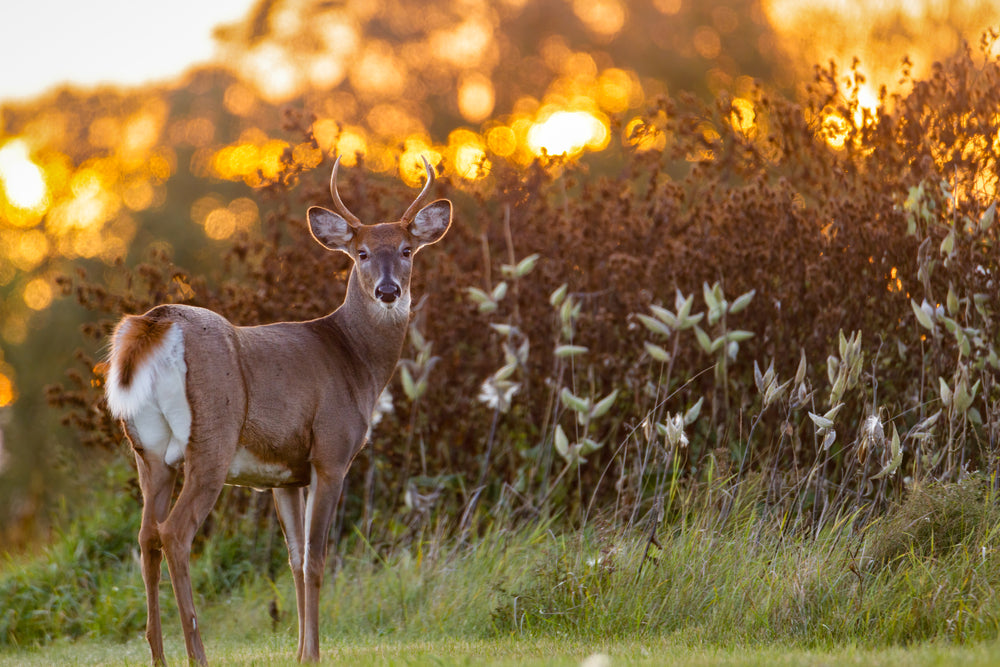When it comes to deer behavior, timing is everything. Deer feeding times establish and define deer movement, and understanding the major feeding times for deer can dramatically affect your hunting potential.
While deer feeders are a fantastic technique to attract deer to one spot, you must also know when deer come out to eat in order to get that perfect shot.
The weather, temperature, barometric pressure, and moon phases all have an impact on deer feeding times. Let’s take a closer look at major feeding times for deer today.
What Are the Most Common Deer Feeding Times?
Major deer feeding times are during the twilight hours of sunset and sunrise. During the day, most deerbed down, making it difficult to hunt or get a shot when they are not on their feet.
They usually feed in the early morning hours before going to bed, then again in the evening and throughout the night. If you’re in a heavy hunting area and deer are highly pressured, there is a high chance the deer will wait until it's dark to feed.
A deer feeder is a great way to keep deer concentrated in your area and track deer movement patterns.
If you want to make the most of your deer hunting time, use a deer feeding chart to track deer behavior. But how accurate are deer feeding charts? They will provide accurate data and show you the best days and times to hunt deer.
What Affects Deer Feeding Times
Weather
Deer activity is affected by weather conditions. Deer frequently feed immediately before and after a cold front. As a result, if your area is expecting a cold front, you should make plans to hunt accordingly.
Temperature
Deer will move far less in the daylight if the temperature is too high. The extreme heat will only make nocturnal bucks more nocturnal. When the weather drops to colder temperatures, you can expect a rise in deer movement. Hunting on cold fronts yields better results.
Barometric Pressure
The atmospheric pressure (barometric pressure) has a significant impact on deer feeding times. Barometric pressure is a measurement of the pressure exerted by air molecules on the earth's surface. Low pressure causes clouds and rain, whereas high pressure brings clear skies and low humidity.
A great time to be in the woods is whenever the barometer rises or there is a high, stable barometer.
Stage of the Rut
According to the National Deer Association, “Deer use of supplemental feed will increase as the rut fades and deer begin to recuperate. Although deer will back off using feed during spring green-up, their consumption will increase significantly a couple weeks afterwards as their bodies are demanding more nutrition for fawning, antler growth and other needs.”
A Note on Deer Food
Understanding the best feeding times for deer is important. But equally important is figuring out what to feed deer in order to attract them. By feeding deer food they like at the right times, you can increase your chances of attracting them to you, thereby increasing your odds of a successful hunt. Here are some common food items that deer enjoy:
- Corn
- Rice
- Bran
- Nuts
- Attractants
- Soybeans
- Apples
- Salt blocks
- Food plots of red clover, chicory, or orchard grass
How Deer Feeder Timers Can Help
Deer feeders with a timer attract deer and provide a reliable food source. By using a digital timer, deer feeders can establish consistent schedules and lure deer throughout the day.
Don’t know how to set a deer feeder timer? All you have to do is set the timer for the time of day you want to hunt to make sure they’ll be there. If you set your timer on your deer feeder to distribute feed during the day, it can train deer to feed in the daylight rather than at night.
Are you ready to train deer to feed during the daytime? If so, it's time to shop our Daytime Deadfall Feeder. It includes an easy-to-use timer so you can open it during the day and close it at night, and can even be powered from a solar panel charger!
Start turning nocturnal deer into daytime deer. Learn more about our Daytime Deadfall Deer Feeder at Tectonic USA today!

